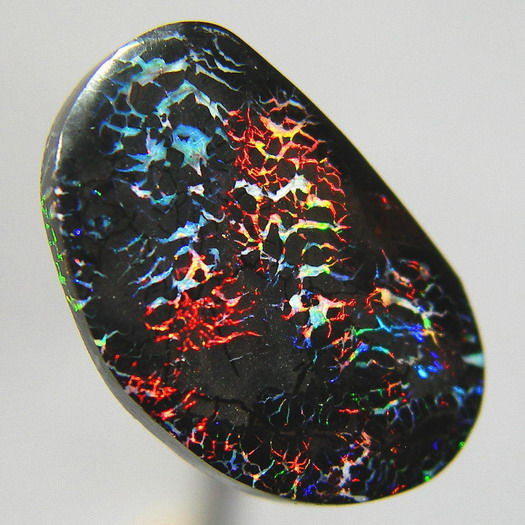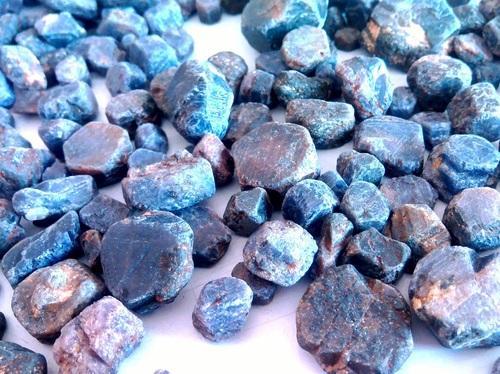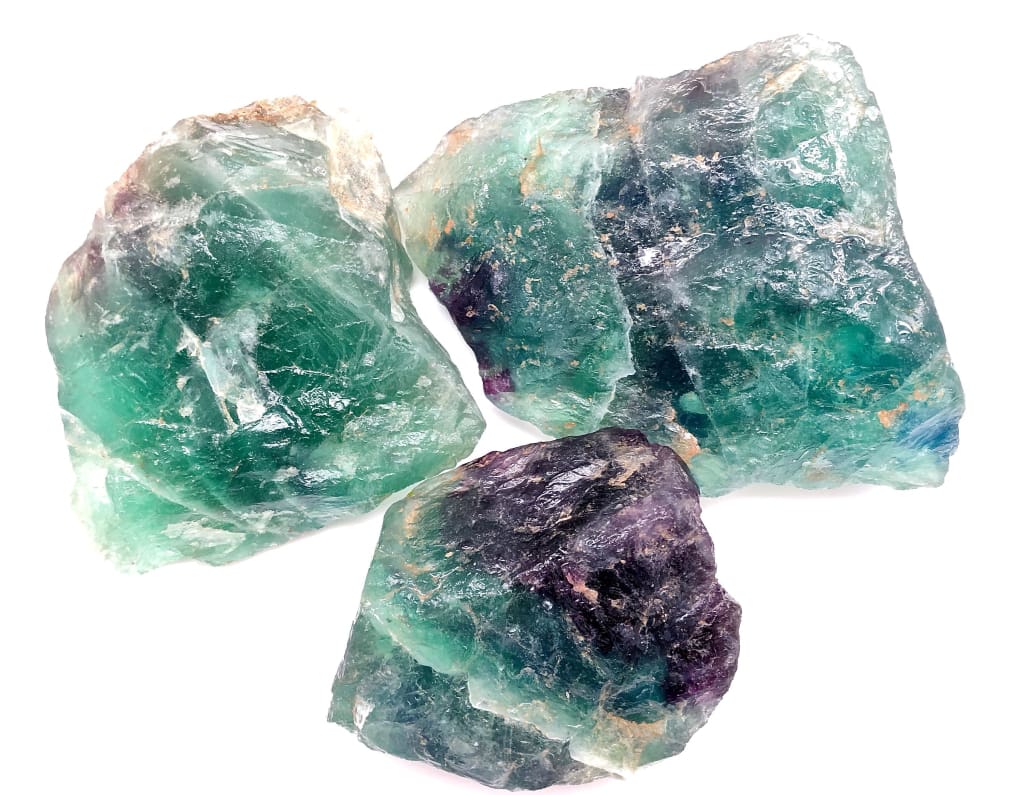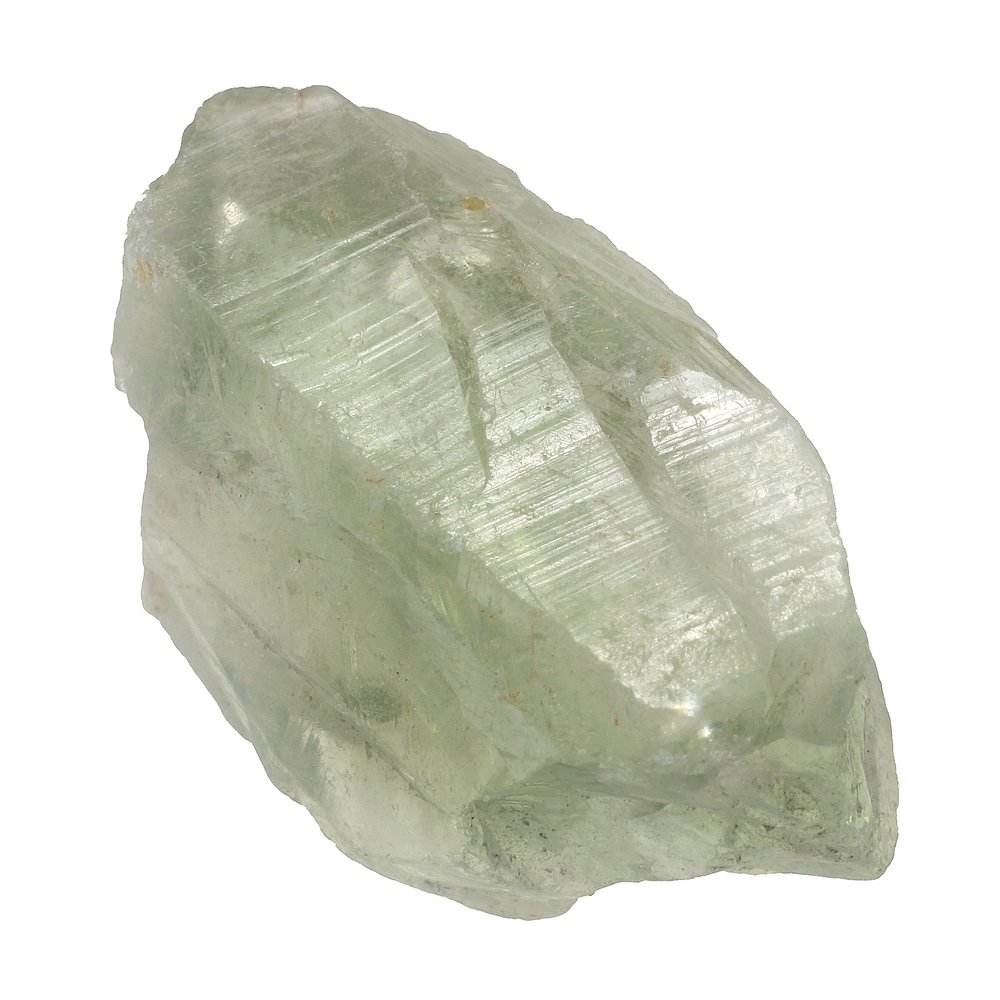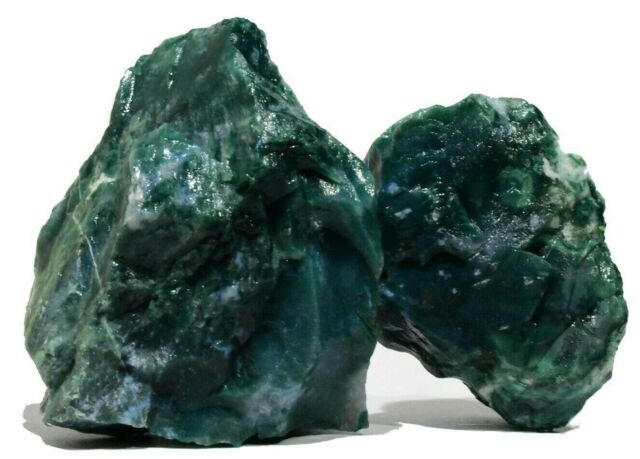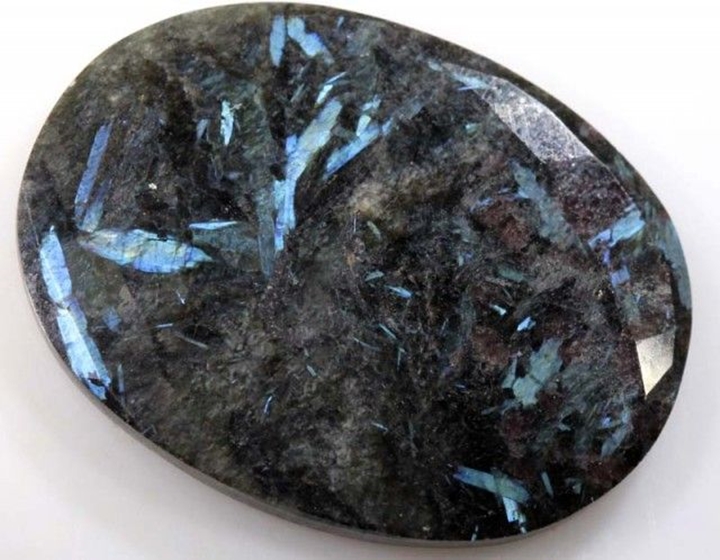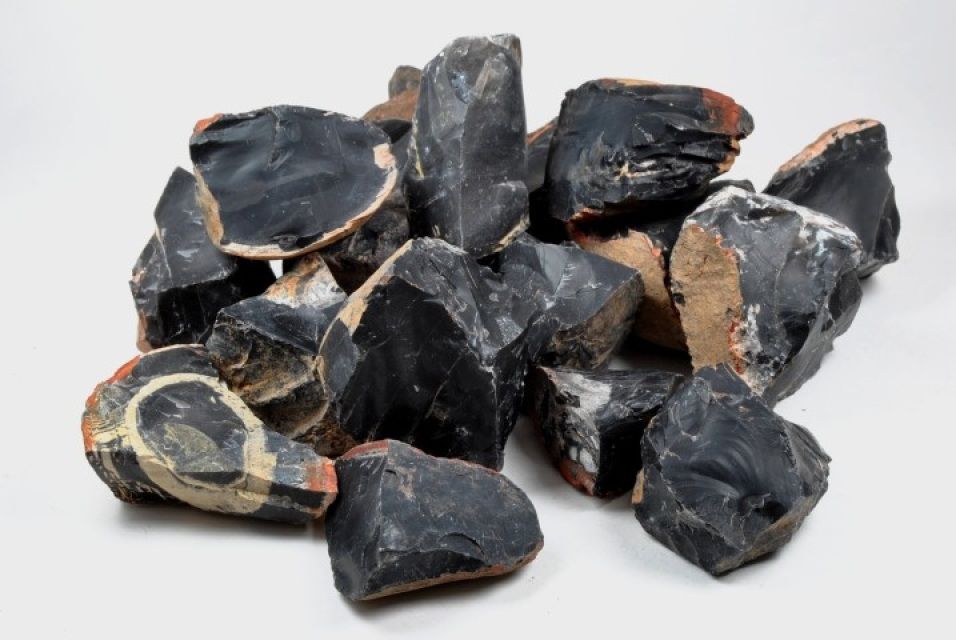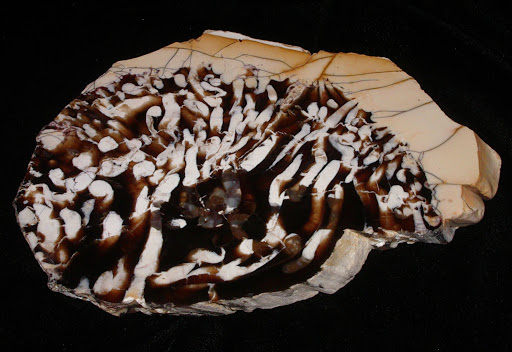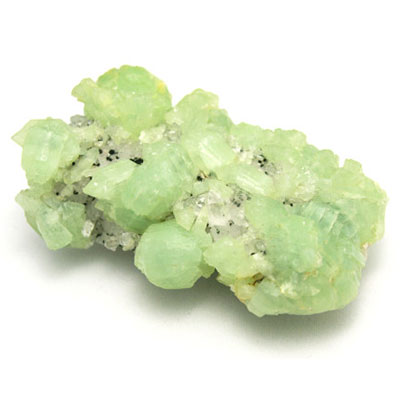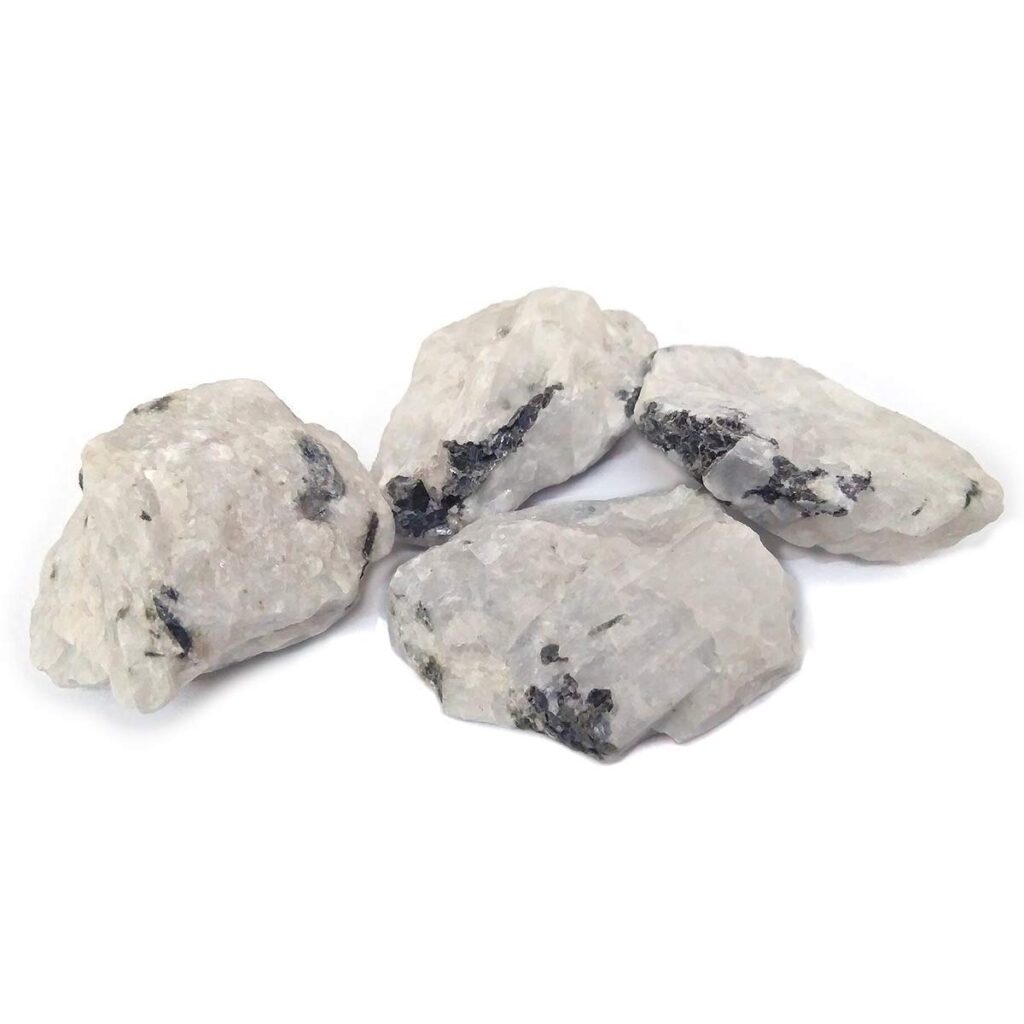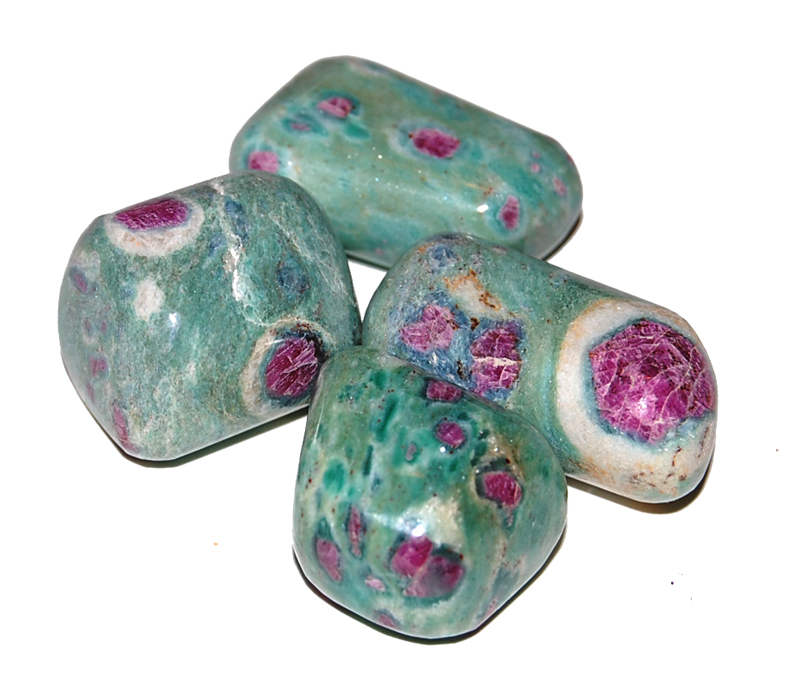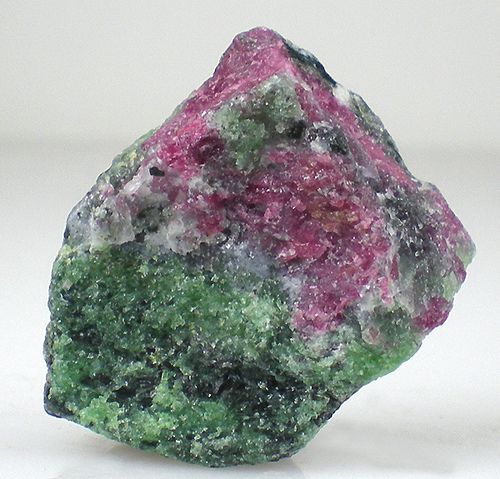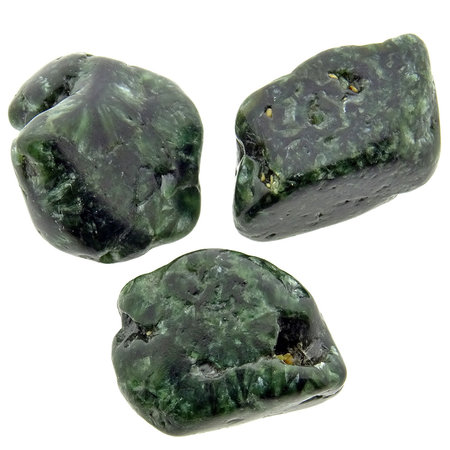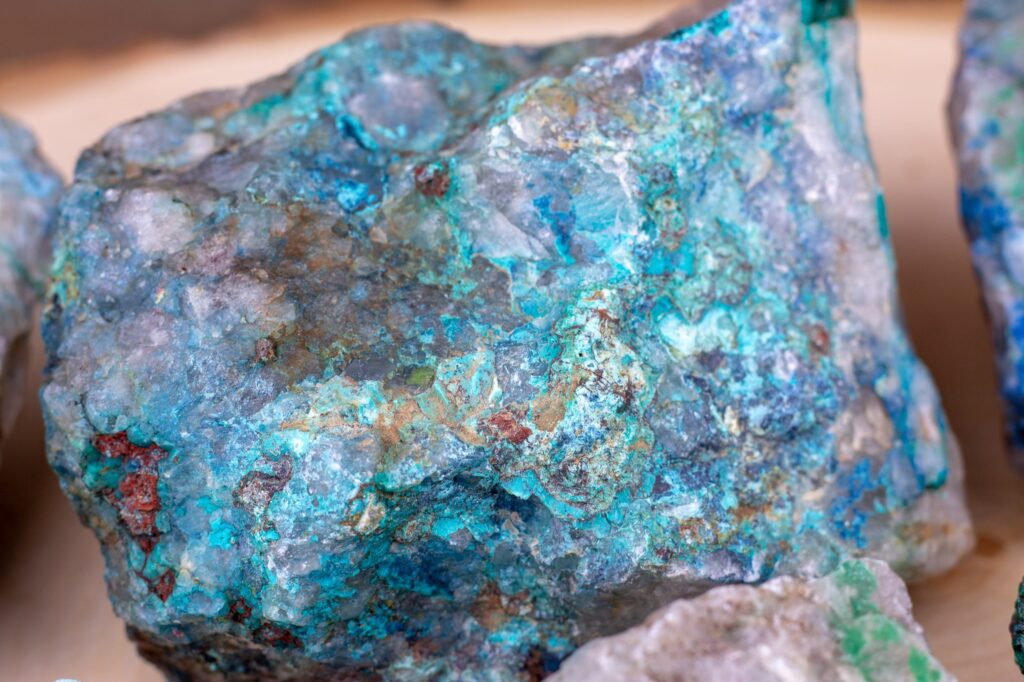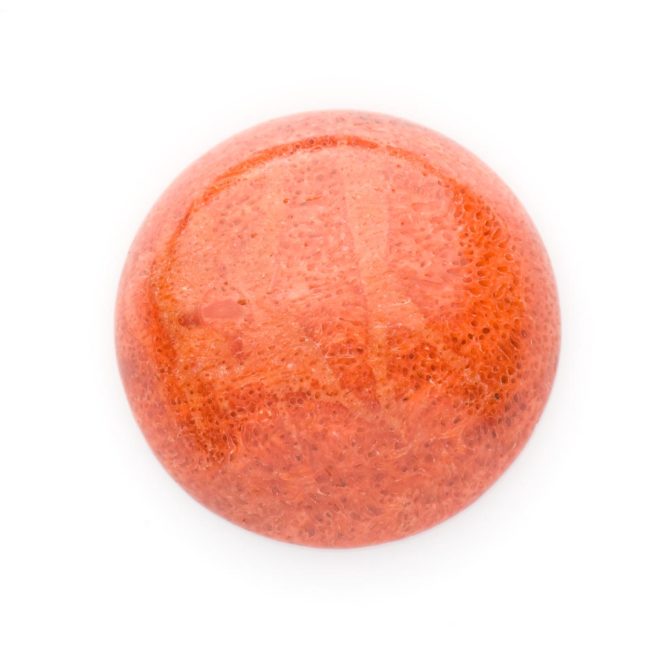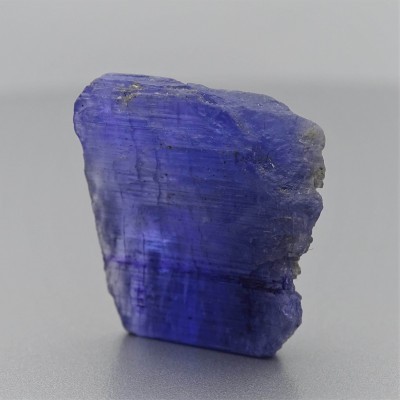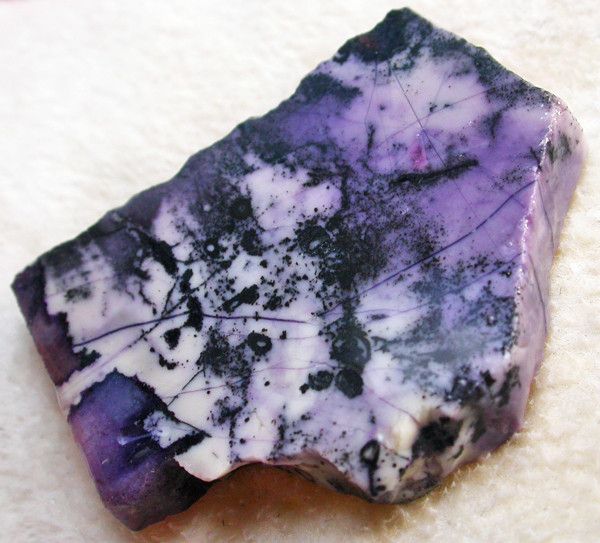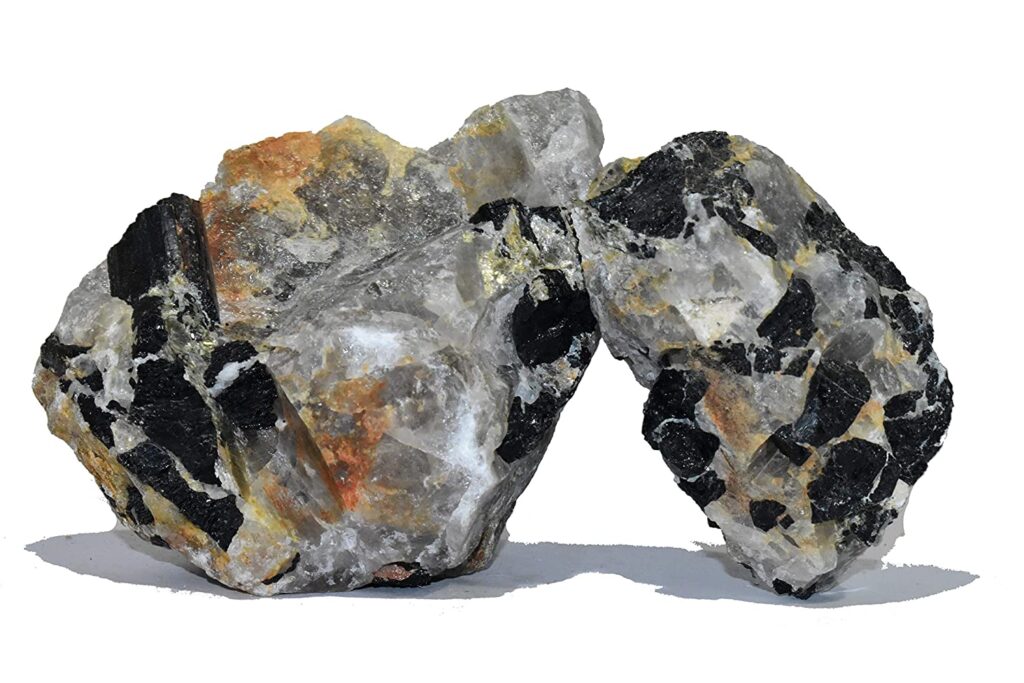Alexandrite
Color changing variety of Chrysoberyl (Color changing because of the slight impurities of chromium).
Ammolite
Ammolite is the gemstone derived from the fossilized shell of the ammonite species Placeenticeros Meeki, it is known as Alberta’s Gemstone.
Apache Gold
Apache gold is a combination of Steatite and Pyrite in the colours of gold and black.
Aquamarine
Aquamarine, named for the Latin phrase“water of the sea” is the variety of Beryl.
Australian Opal
Australian Opal are made of thin slices of fine quality glued to backing pieces of black patch, glass or Queensland ironstone, thus resembling natural black opal or Queensland boulder opal.
Black Matrix Opal
Black Matrix Opal Is a porous white Opal found only in Andamooka, Australia is known as Black Matrix Opal or Mass Opal.
Bloodstone
Bloodstone (also called Heliotrope– which is from two Greek words: helios, the Sun and tropos, to turn) is a variety of chalcedony.
Blue Lace Agate
Blue lace agate gemstone was discovered by an American Prospector named George Swanson at his farm in Ysterputs, Namibia.
Blue Sapphire Stone
Sapphire is the second hardest crystal that mother earth has given us. It comes from the Corundum mineral family.
Blue Topaz
Origin-: Name the state gem of Texas in 1969 when a small deposit of natural pale blue Topaz was found.
Brecciated Mookaite
A beautiful variant of Brecciated Mookaite. Brecciation refers to a geological process where earth movement causes mineral deposit to break and shatter.
Chalcedony
Origin-: Derived from the name of the ancient Greek town Chalkedon in Asia Minor.
Charoite
Origin-: Discovered in Siberia, Russia in 1947, but only became known internationally in the Murun mountains in Yakutia, its name derived from the Chary River.
Chrysanthemum
Chrysanthemum gemstone seems to have received its name because of the unique patterns embedded in the stone which resembles that of flowering chrysanthemums.
Chrysocolla
Origin-: The name comes from the Greek chrysos “gold” and kolla, “glue”, in allusion to the name of the material used to solder gold, and was first used by Theophrastus in 315 B.C.
Citrine
Origin-: Name from the French word form lemon, “citron” Many citrines have a juicy lemon color.
Cobalto Calcite
Pink cobalto calcite, also referred to as Pink Dolomite or Pink Drusy(natural surface coating of fine crystals that sparkle).
Coral
Coral has been called the “garden of the sea”. Other Names-: Moonga (Indian Name), Rosso, Munga, Bhauma-Ratna, Gems of Mars, Vidruma,Abdhijantu, Being of the ocean.
Crocodile Jasper
A sedimentary form of Jasper consisting of fossilized algae or stromatolite, Crocodile Jasper is very attractive in shades green with deep green orbs.
Ethiopian Opal
Origin-: Opal was first discovered in Mezero, Shewa province in Ethiopia in the early 1990’s.
Fluorite
Origin-: Named after its composition containing fluorine (Latin, fluere= “to flow”).
Garnet
Origin-: Comes from the Latin word “granatus” (seed-like) because it looks similar to pomegranate seed.
Gaspeite
Gaspeite is found around nickel sulphide deposits. The frequency of Gaspeite connects to the Earth star, base and solar plexus chakras.
Golden Rutilated Quartz
Quartz stones that contain mineral inclusions are called “Rutilated Quartz” or “Sagenite”, popularly known as Venus-hair stone. Rutile lights are small needle-like crystals.
Green Amethyst
Green Amethyst (also known as ‘prasiolite’) is the trade name for green quartz which has been created by the heat treatment of amethyst.
Imperial Jasper
Imperial Jasper forms in nodules, usually with a chalky white covering that must be removed to reveal the jasper.
Labradorite
Labradorite or Black Moonstone is the plagioclase feldspar ad in the same family as Albite. It has been found in meteorites.
Lapis Lazuli
Origin-: A.Boetus de Boodt, 1636, Gemm Lapid hist. t page 273. It is said to be derived from the latin word “Lapis” the persian “Lazhward”, meaning Blue.
Larimar
Origin-: Discovered by Mr. Mendez, A Peace corp worker ,in 1974, he gave it the name larimar….lari (after his daughter larisa) and Mar (from the Spanish name for sea) as the colors so resembled the sea which was so close in proximity.
Lemon Quartz
Lemon Quartz is created by heating amethyst, yellow quartz and iron together at extremely high temperatures. This heating process is what gives lemon quartz it’s brilliant yellow colour.
Malachite
Origin-: Green colour Malachite derived its name from the Greek word Mellow meaning a green herb.
Merlinite
It is a combination of white quartz & dark blue to black psilomelane, It combines vibrations from both the Earth and the Heavens.
Moldavite
Origin-: Moldavite is a tektite. The first tektites were found in 1787 in the Moldau River in Czechoslovakia, hence the name Modavite.
Mystic Topaz
Mystic Topaz is “real” Topaz usually made with colorless or white Topaz and thinly lined with titanium or other type of metal.
Nuummite
Nuummite is a gemstone formed from a mixture of two minerals from the orthoamphibole group. anthophyllite and gedrite.
Ocean Jasper
The name Jasper means “spotted stone”, and is ultimately derived from the Persian word ‘yashp’.Ocean Jasper is mined near the ocean, hence the name.
Onyx
Onyx is a bonded variety of chalcedony. The name comes from the Greek word onux, meaning finger nail.
Peanut Wood
“Peanut wood” is a petrified wood, generally of a black color with numerous borings, which were made by a marine wood-boring bivalve, Teredo. Colors-: Rich browns, red/brown, grey, yellow/orange and black. Hardness-: 7 on the mohs scale. Transparency-: Opaque. Occurrence-: Mooka creek, about 170 km east of Carnarvon in Western
Pearl
The English word ‘Pearl’ comes from Middle English and old French ‘Perle’, and Greek word “Margarites”. Other Names-: Moti, mukta, sasi-ratna, gem of the moon, taraka, falling star, jiva-ratna Color-: White, blue, green, yellow, orange, brown, pink, purple, grey, black, multicolor. Streak-: white. Hardness-: 2.5-4.5 on the Mohs scale. Luster-:
Peridot
Peridot is from 13th century English word peridote. Derivates from the French term peritot which means vogue. Color-: Yellow-green, olive-green, to brownish, sometimes a lime green, to emeraldish hue. Varieties-: Bottle green colour is called Peridot. Yellowish green is called chrysolite. Olive green is olivine. Mohs hardness-: 6.5 to 7
Pietersite
Pietersite was first discovered by Sid Pieters in 1962 while prospecting farmland. He registered the find in mineral records of Britain, which was published in 1964 naming the material Pietersite. It is often called the Tempest stone (connection to the storm element) Eagle’s Eye, and said to truly be a
Pilbara Jasper
Gorgeous Jackson Pollock style Jasper has poles of streaky colors layered across each other creating a hatching effect across its surface. Color-: Shades of grey, beige, red, mustard, dark brown with some black and white, usually colored by Iron oxide. Hardness-:7 on the Mohs scale. Luster-: Silky. Astrological Sign-: Virgo,
Pink Opal
Pink opal is an opaque variety of Opal, sometimes referred to as “Andean Opal” or “Peruvian Opal”. Color-: Pink and white to lavender and cream. Hardness: 5.5-6.5 on the Mohs scale. Lustre-: Vitreous. Birthstone-: October. Zodiac Sign-: Cancer, Libra, Pisces and Scorpio. Occurrence-: Andes Mountains near San Patricio, Peru, Canada,
Prehnite
Origin-: Named after the Dutch Colonel H. Von Prehn (1733-1785). Color-: Pale green, Lemon/Lime green, Yellowish grass green, Grey, White or colorless sometimes with needle like inclusions of Epidote. Streak-: White. Hardness-: 6 to 6.5 with an orthorhombic crystal structure. Luster-: Vitreous and Pearly. Transparency-: Transparent to translucent,. Zodiac Sign-:
Psilomelane
Psilomelane,also known as black hematite. Origin-: Named in 1758 from the Greek psilos – “smooth” and melas – “black.” Color-: Variable from iron-black to bluish black to steel grey with grey pyrolusite bands. Streak-: Brownish black. Hardness-: 5-6 on the Mohs scale. Diaphaneity-: Opaque. Luminescence-: Non-fluorescent. Luster– : Sub Metallic,
Rainbow Moonstone
Origin-: Moonstone was named the state gemstone of Florida in 1970 after Neil Armstrong and Buzz Aldrin’s historic landing on the moon. It owes its name to the striking play of light on its surface which changes when the stone is moved. Other Names-: Water Opal, Fish-eye and wolf’s-eye, “selenite”,
Rhodochrosite
Rhodochrosite is also known as Inca Rose stone, Raspberry Spar and Manganese Spar. Color-: Pink, rose, red, yellowish-grey, brown, white; colourless to pale rose in transmitted light, Opaque forms with swirling patterns. It may be in Cut, Cabochon or Carved-: Hardness-: 3.5 to 4 on the Mohs scale. Lustre-: Vitreous
Rhodonite
Origin-: Rhodonite is derived from the Greek word rhodon for rasy, although there is also a reference that credited a celtic word the rhod, which means wheel. Color-: Pinkish red to brownish red but may be pink grey or yellowish. Transparent material can be a vivid red to orange red.
Rose Quartz
Origin-: The first discovery was made about 250 years ago. The king of Bavaria y took over the mining of the rose quartz, which is probably how it gained popularity. In later times it was extremely popular with Romans. It was originally discovered in Southern Germany near the border of
Ruby
Ruby is a red gemstone variety of Corundum. It comes under the precious stone. Origin-: its name comes from ruber, Latin for red. Other Names-: Manik, Padmaraga, Red-lotus colour gem, Shona-Ratna, Red Jewel, Ravi-Ratna, Gem of the Sun. Color-: Red or pigeon blood red, maybe brownish, purplish or pinkish. Mohs
Ruby Fuchsite
Ruby in Fuchsite is a pale to dark green variety of Muscovite with medium to low grade ruby inclusions. Colour-: Green (fuschite), red (rubies), blue (kyanite) and cream to white (Quartzite). Hardness-: Fuchsite 2-3, Ruby 9. Astrological sign(s)-: Aquarius. Occurrence-: Brazil, India, Pakistan, USA. Metaphysical Properties-: Ruby is an energizing
Ruby-Zoisite
Ruby zoisite was first discovered in 1805 in Austria, when a mineral dealer named Simon Prešer brought it to a scientist for identification Origin-: The name anyolite derives from the word for “green” in the native language of the Masai tribe. Colors-: Deep red ruby in green zoisite. Hardness-: 6.5-9
Seraphinite
Seraphinite (or Serefina),also known by the name Clinochlore. It was found and described by the famous Russian mineralogist Nikolal J. Koksharov(1818-1892).A chromium- rich variety of Seraphinite, called Kammererite. Origin-: Seraphinite is derived from the Latin word “seraphin” referring to the first order of angels. Color-: Deep forest green with feathery
Shattuckite
Origin-: Named after its discovery locality, the Shattuck Mine, Bisbee, Arizona, USA in 1915. Color-: Light to dark blue, Teal, Turquoise. Hardness-: 3.5 on the Mohs scale with an orthorhombic crystal structure. Lustre-: Dull to vitreous. Diaphaneity (Transparency)-: Opaque to Translucent. Streak-: Pale blue. Astrological Sign-: Aquarius, Libra, Sagittarius, Taurus.
Silver Leaf Jasper
Reminiscent of silvery leaves in a forest, the finely colored and patterned jasper. Formation-: Nodes in volcanic rocks, banded masses and geodes. Properties-: Distinguished by its grey silver green coloration resembling foliage patterns. In silver leaf jasper, the swirls and spotted patterns as well as the colors are heightened when
Smoky Quartz
The name is obviously derived from its brown to grey colour. Very dark smoky quartz is called Morion. Color-: grey, brown, black. Lustre-: Vitreous. Diaphaneity (Transparency) -: Transparent, Translucent. Birthstone-: November Astrological sign-: Capricorn and Sagittarius Hardness-: 7 on the Mohs scale Occurrence-: Brazil, Madagascar, Switzerland, USA, Australia, Spain, Smoky
Sponge Coral
Sponge coral is an organism that lives in the sea, It has been called the ‘garden of the sea’. Color-: Strong orangey red, pink, white, blue, yellow and black. Streaks-: Yellow or brownish in red and grey in blue sponge coral. Hardness-: 3.5 on the Mohs scale. Zodiac Sign-: Aries,
Tanzanite
Tanzanite is known as gem Zoisite or blue/purple Zoisite. Origin-: Discovered in 1967 when Tiffany Jewelers introduced it to the market in the Mererani Hills of Northern Tanzania near the city of Arusha and Mount Kilimanjaro. Color-: Purple to blue, Bronze. Hardness-: 6.5 on the Mohs scale with an orthorhombic
Tiffany
Synonyms–: Opalized Fluorite, Opal Fluorite, Bertrandite, Ice Cream Opalite, Purple Opal. Color-: Blue, brown, mauve, grey, tan, purple, reddish brown, black Hardness-: 4 on the Mohs scale. Luster-: Vitreous, resinous, waxy. Diaphaneity-: Sub translucent to opaque. Occurrence-: Brush-Wellman Beryllium mine in the western deserts of Utah in the USA. Metaphysical
Tourmaline
Origin-: From the Sinhalese word “Thuramali” or “Thoramalli” applied to different gemstones found in Sri Lanka. Color-: Most commonly black, but can range from brown, violet, green, pink, or in dual coloured pink and green. Varieties-: Dravite: Dark yellow to brownish black. Schorl: Bluish or brownish black to black. Rubellite(
Tourmaline Quartz
Tourmaline Quartz, also known as Tourmalinated Quartz is a variety of Clear Quartz with naturally occurring needle-like inclusion of Black Tourmaline also known as Schorl. Color-: Clear or milky with black needles. Hardness-: 7 to 7.5 on the Mohs scale. Zodiac Sign-: Capricorn, Libra and Scorpio. Occurrence-: Worldwide, the vast
Turquoise
Origin-: The name Turquoise came into use only in the 13th century, when a French trader brought this gem from a Turkish market. He called it ‘Pierre Turquoise’ meaning Turkish tone. Color-: Blue-green with black or brown Matrix. Hardness-: 6 on the Mohs scale with the triclinic crystal structure. Birthstone-:
Verdite The Green Stone Of Africa
Verdite is a variety of muscovite, a green color rock of chrome mica with chemical composition Aluminium Silicate. Alternative Names-: Buddstone, African jade and African green gold, Brown serpentine. Color & Appearance-: Shades of green often mottled with yellow, red white and light green patches Occurrence-: Barberton district of South
Yellow Tiger Eye
The Tiger’s Eye belongs to the ‘microcrystalline’ variety of quartz. Color-: Golden brown. Hardness-: 7 with a trigonal crystal structure. Zodiac Sign-: Pisces, Gemini, Capricorn(Ancient). Birthstone-: November(Ancient) Lustre-: Silky. Appearance-: Chatoyancy Occurrence-: South Africa, Brazil, India, Burma, Western Australia, USA,Sri Lanka(Ceylon). Metaphysical Properties-: A healing stone for elements of the








